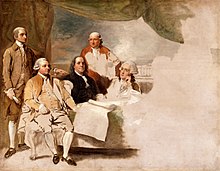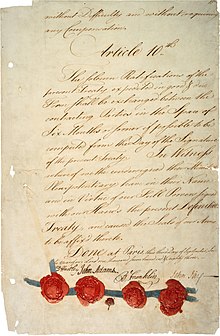
Charles Manners-Sutton was a bishop in the Church of England who served as Archbishop of Canterbury from 1805 to 1828.
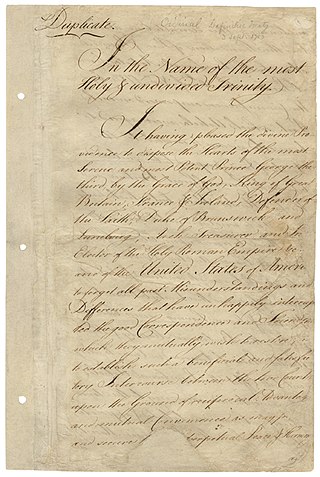
The Treaty of Paris, signed in Paris by representatives of King George III of Great Britain and representatives of the United States on September 3, 1783, officially ended the American Revolutionary War and recognized the Thirteen Colonies, which had been part of colonial British America, as an independent, sovereign nation.

East Florida was a colony of Great Britain from 1763 to 1783 and a province of the Spanish Empire from 1783 to 1821. Great Britain gained control of the long-established Spanish colony of La Florida in 1763 as part of the treaty ending the French and Indian War. Deciding that the territory was too large to administer as a single unit, Britain divided Florida into two colonies separated by the Apalachicola River: East Florida with its capital in St. Augustine and West Florida with its capital in Pensacola. East Florida was much larger and comprised the bulk of the former Spanish territory of Florida and most of the current state of Florida. It had also been the most populated region of Spanish Florida, but before control was transferred to Britain, most residents – including virtually everyone in St. Augustine – left the territory, with most migrating to Cuba.
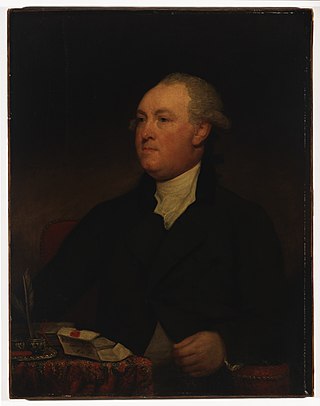
Thomas Townshend, 1st Viscount Sydney was a British politician who sat in the House of Commons from 1754 to 1783 when he was raised to the peerage as Baron Sydney. He held several important Cabinet posts in the second half of the 18th century. The cities of Sydney in Nova Scotia, Canada, and Sydney in New South Wales, Australia were named in his honour, in 1785 and 1788, respectively.

Patrick Tonyn (1725–1804) was a British General who served as the last British governor of East Florida, from 1774 to 1783. His governorship lasted the span of the American Revolution. East Florida was a Loyalist colony during the war.

Bunce Island is an island in the Sierra Leone River. It is situated in Freetown Harbour, the estuary of the Rokel River and Port Loko Creek, about 20 miles upriver from Sierra Leone's capital city Freetown. The island measures about 1,650 feet by 350 feet and houses a castle that was built by the Royal Africa Company in c.1670. Tens of thousands of Africans were shipped from here to the North American colonies of South Carolina and Georgia to be forced into slavery, and are the ancestors of many African Americans of the United States.

Flintham is a village and civil parish in the Rushcliffe district in Nottinghamshire, 7 miles from Newark-on-Trent and opposite RAF Syerston on the A46. It had a population of 597 at the 2011 Census and estimated at 586 in 2019. The village name was taken by the Ham class minesweeper HMS Flintham.

Richard John Uniacke was an abolitionist, lawyer, politician, member of the Nova Scotia House of Assembly and Attorney General of Nova Scotia. According to historian Brian Cutherburton, Uniacke was "the most influential Nova Scotian of his day.... His faith in Nova Scotia's destiny as a partner in a great empire was only to be equalled by Joseph Howe." He devoted 49 years to public service in Nova Scotia. He fought in the American Revolution and later sought to emancipate Catholics and Black Nova Scotians who were slaves in Nova Scotia. He is buried in the crypt of St. Paul's Church. His substantial estate is preserved as the Uniacke Estate Museum Park at Mount Uniacke.

John Marrant was an American Methodist preacher and missionary and one of the first black preachers in North America. Born free in New York City, he moved as a child with his family to Charleston, South Carolina. His father died when he was young, and he and his mother also lived in Florida and Georgia. After escaping to the Cherokee, with whom he lived for two years, he allied with the British during the American Revolutionary War and resettled afterward in London. There he became involved with the Countess of Huntingdon's Connexion and ordained as a preacher.

Levett is a surname of Anglo-Norman origin, deriving from [de] Livet, which is held particularly by families and individuals resident in England and British Commonwealth territories.
Francis Levett (1654–1705) was a Turkey Merchant of the City of London who in partnership with his brother Sir Richard Levett, Lord Mayor of London, built a trading empire, importing and distributing tobacco and other commodities, mainly from the Levant. He served as Warden of the Worshipful Company of Mercers.
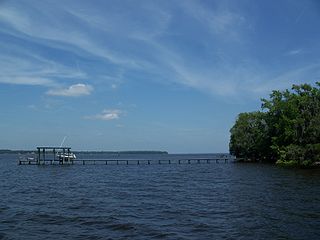
Francis Levett was an English trader, who worked as factor at Livorno, Italy, for the Levant Company until he lit out for East Florida in 1769 where his brother-in-law Patrick Tonyn of the British Army had been appointed governor of the English colony. Wielding connections from a lifetime of overseas trading, as well as family connections from a powerful English mercantile family, Levett built one of the first plantations in Florida, and then forfeited his investment when the English lost their foothold in Florida, forcing him to flee to the British colony in the Bahamas. Eventually his son returned to Georgia, where he became the first to plant Sea Island cotton in America.

Sir Richard Levett was an English merchant, politician and slave trader who served as Lord Mayor of London in 1699. Born in Ashwell, Rutland, he moved to London and established a pioneering mercantile career, becoming involved with the Bank of England and the East India Company. Levett was acquainted with many prominent individuals during his time in London, among them Samuel Pepys, John Houblon, William Gore, Sir John Holt, Robert Hooke, and Charles Eyre. He acquired several properties in Kew and Cripplegate.

Events from the year 1724 in Canada.

Auchincruive is a former country house and estate in South Ayrshire, Scotland. It is located 4 kilometres (2.5 mi) east of Ayr, on the north bank of the River Ayr. Auchincruive House was built in the 18th century on the site of an earlier mansion. In 1927, the estate became the West of Scotland College of Agriculture, and the house was renamed Oswald Hall. The college became the Scottish Agricultural College in 1990. In 2007 the college announced that the site would be disposed of for redevelopment, and masterplan proposals were approved by South Ayrshire Council in January 2011. The house is protected as a category A listed building, along with other buildings on the estate. The estate is included on the Inventory of Gardens and Designed Landscapes in Scotland, the national listing of significant gardens. The house was returned to its original name of Auchincruive House in May of 2020, the listed building records have also been updated to reflect this.

James Oswald was a Scottish merchant and Member of Parliament (MP) for Glasgow.
John Cruden (1754–1787) was a Scottish merchant and Loyalist leader of the American Revolutionary War.

George Oswald of Scotstoun (1735–1819) was a Scottish merchant of Glasgow. In 1797 he was elected Rector of the University of Glasgow.
Thomas Thoroton, was a British politician who sat in the House of Commons for 25 years between 1757 and 1782.

